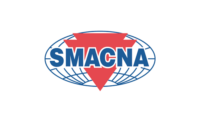Firefighters may be the only ones who fully respect the catastrophic potential of grease duct in commercial kitchens. Even experienced restaurant owners and chefs may not realize how critical this seemingly everyday mechanical component is for ensuring the safety and livelihood of a food service establishment. But, the fact is, the majority of restaurant fires originate on the kitchen cooking appliance and flare into the kitchen exhaust system.1 Leaks in field-welded grease ducts increase the risks of fire and also exacerbate the consequences. Unfortunately, most welded ductwork leaks.2
Prefabricated, UL-listed grease duct, an increasingly sought after alternative to traditional field-welded duct, significantly reduces the probability and consequences of grease duct leaks, which can lead to fires. This paper, intended as a guide for commercial kitchen owners, designers, and installers, explains how prefabricated duct differs from field-welded grease duct, and why it is an overall safer and more cost-effective solution. It also identifies best practices for prefabricated grease duct selection, installation, and maintenance.

Grease Duct: Purpose, Challenges & Risks
Grease duct is required on all Type-1 kitchen hoods (hoods used with appliances that produce grease and smoke during the cooking process), per the International Mechanical Code (IMC), Section 507. It connects to the kitchen hood and terminates at the exhaust fan, typically located on the building rooftop. In addition to providing a pathway for the exhaust of heat, smoke, and grease-laden vapors from the building, grease duct is also essential for fire suppression. It should protect the surrounding environment from fires within the duct as well as protecting the duct’s interior from fires that ignite outside the duct. However, if the grease duct lacks integrity or stability, it can quickly turn into a fire transport system, putting an entire building at risk for rapid fire spread.
There are two basic options when it comes to grease duct: (1) field-welded rectangular duct, typically made of carbon steel, or (2) factory-built round duct made of stainless steel and/or galvalume, available with key UL listings. In either case, grease duct is expected to comply with certain codes and standards to ensure safety. These include the National Fire Protection Association (NFPA), International Mechanical Code (IMC), and Uniform Mechanical Code (UMC).
NFPA 96, IMC, and UMC all require 18-inch clearance between any combustible and any single-wall, unenclosed grease duct. If the required clearance is not possible due to space constraints, UL-listed, prefabricated duct products can be used to reduce necessary clearances down to zero. If the application requires zero clearance to combustibles or a two-hour fire rating to meet the local code, or because the engineer/owner considers the consequences or probability of a fire to be high (see Table 1), UL-listed, prefabricated grease duct can be used. This listing means the duct has been tested to UL 1978 and UL 2221 for continuous temperatures of 500°F and intermittent temperatures of up to 2,000°F for 30 minutes (a simulated internal fire) and two-hour fire rating (exterior engulfment) at zero clearance to combustibles.
There is no listing for field-welded duct, so meeting the aforementioned requirements is difficult and not especially reliable. Field-welded duct must either be enclosed in a fire-rated shaft or be wrapped in the field using a foil-faced insulation that meets ASTM E2336 if zero clearance is required. Despite these measures, field-welded ducts have shown signs of extreme thermal stresses when tested to UL Listed duct standards.3
UL-listed, zero-clearance grease duct is a plug-and-play solution for applications that would otherwise require a fire-rated duct enclosure or ASTM E2336 wrapped welded duct. This type of listed duct is dual-wall with 3 inches of fiber insulation sandwiched between the inner and outer walls, so no field wrapping is required, saving time at the job site.
The fact that prefabricated grease duct does not require welding answers one of the biggest challenges facing food service owners and installers: The progressive scarcity of certified welders. There is an anticipated shortage of over 375,000 skilled welding professionals this year, based on data received from the Economic Modeling Specialists International and the American Welding Society.4 This is an especially critical problem for grease duct installations, where leaky, welded ducts are often the root cause of failed inspections, unsightly damage and stains, problematic odors that may spread into adjacent spaces, rodent and pest infestation, mold, and fires or exacerbation of fires.
Owners need to realize that all of the above issues can occur at any point during the life of the exhaust system. Since restaurants and cafeterias are usually contained within other types of properties (e.g., schools, health care facilities, hotels, hospitality venues, and mixed-use buildings) owners, patrons, and occupants in other spaces may also be impacted.

Why Field-Welded Ducts Leak
What makes field-welded duct vulnerable to leaks? There are a number of reasons beyond the shortage of skilled welding labor. A single kitchen exhaust system may contain hundreds of welds, many of which occur in cramped, poorly lit areas.
In a previous Engineered Systems article, “Issues and Improvements in Commercial Kitchen Exhaust,” the author, Douglas Horton, MS, MBA, CFSP, writes: “In many routine visits to operating food service facilities and fire scenes, we have seen many leaking grease ducts and access doors, resulting in grease on top of hoods [….] on gypsum board ceilings, and permeating lay-in ceiling panels, thus providing flammable fuel for fires.”5
Joints, seams, and penetration holes of grease duct all require continuous welds to prevent grease and residue from leaking into the interior. Workmanship, job site conditions, and unfamiliarity with codes often make achieving a perfect installation a longshot. Codes require that ducts be leak-tested, but most permit smoke or light testing methods, which do not ensure a liquid-tight installation, especially since dust and debris often settle into weld cracks during construction, obscuring light and smoke from being observed. Tests that rely on power washing are much more effective at revealing leaks, but in practice are more the exception than the rule.

Prefab Grease Duct: A Well-Rounded Solution
Prefabricated, UL-listed duct counters the vulnerabilities associated with field-welded duct and provides value-added performance and longevity, including:
No Leaks — Properly installed, prefabricated ducts don’t leak, thanks to the fact that all welding is performed in a controlled and well-lit manufacturing environment by highly trained factory labor using laser technology. Innovations like DuraVent’s liquid-tight sleeves also help ensure a leak-free installation.
Better Drainage — Because most prefabricated grease duct is round instead of rectangular, grease efficiently drains to the bottom of the duct. Grease tends to pool and accumulate in the corners of flat duct, creating areas of buildup. Over time, this accumulation can degrade exhaust performance and provide ample fuel for any fire that happens to ignite and spread into the duct.
Easier to Clean — Round ducts are typically easier to clean because there are no hard-to-reach corners where grease tends to accumulate.
Energy Efficiency — Round duct tends to create less pressure drop throughout the exhaust system and, therefore, requires less fan horsepower to draw exhaust air through the duct. Standard air duct calculation methods indicate a possible 26% friction reduction (per 100 feet) through a 14-inch round duct compared to a rectangular duct of comparable sizing.
Better Access — As a complete system, prefabricated duct systems arrive at the job site with properly spaced access doors to allow more thorough inspection and cleaning. Field-welded systems are notoriously lacking in sufficient access, and some access doors may be covered up with fire wrap.
Less Slope — Because round duct drains better, it requires less slope per foot — one 1/16-inch per foot — compared to 1/4-inch per foot for rectangular duct. Where horizontal ducts exceed 75 feet in length, the required slope is 3/16-inch per foot, compared to 1-inch per foot for rectangular duct.6 This reduces the amount of vertical space required for an installation. This slope exception is allowed for UL-listed duct per NFPA 96, IMC, and UMC codes.

Fewer Field Inspections — Prefabricated duct requires only one post-installation inspection. Field-welded, fire-wrapped duct must be inspected at three different points during the construction process — once after welding is complete, again after the first layer of insulation is applied, and finally after the second layer of insulation is applied.
Improved Survivability — There are no requirements for how field-welded duct must hold up when exposed to extreme fire. And when they have been tested to standards similar to UL 1978 and 2221, the insulated ducts collapsed.7 On the other hand, UL-listed, prefabricated duct has shown excellent survivability in real life fire events, reinforcing the validity of the listing. A fire that took place in a restaurant in the historic Old Port neighborhood of Montreal is a good example. The fire, likely due to a spark from a wood-fired grill contacting some residual grease in the exhaust duct, quickly spread through the duct to the roof of the building, but fortunately stayed contained within the duct all the way to the chimney. Post fire inspection of the inner wall of the duct showed discoloration only, an indication of the extremely high temperature of the fire; however, the outer duct wall showed no stress at all. The liquid-tight duct system kept the fire from spreading to the building structure.8
Design Considerations
Many prefabricated grease duct systems are over-designed, which leads to inflated perceptions of the cost of these systems. Therefore, it is important that engineers select the lowest cost solution that meets the needs of the application and preferences of the owner.
Materials — Since stainless steel is among the most expensive material options, designers should limit its selection to the interior of double-wall duct, where it generally outperforms other materials in a highly corrosive grease environment. Stainless steel outer walls provide little to no functional advantage over galvalume, which is 12%-17% cheaper and can be painted to match the décor. However, some exposed applications will demand stainless steel, depending on space aesthetic and preferences of the owner (and sometimes the chef). Ducts that are hidden above ceilings or behind walls should always be galvalume. To help guide engineers and owners through the materials selection process, DuraVent has developed a “Decision-Tree” that is included in its design guide for prefabricated duct.
Clearances — If a local fire and/or building code requires a two-hour rating or zero-clearance duct, a UL 2221-listed duct must be selected. Options for saving costs include downsizing the duct diameter, depending on the fan performance characteristics, and routing the duct to minimize the number of required elbows, access doors, and customer parts. If neither a two-hour fire rating or UL 2221 listing is required, costs may be reduced by mixing and matching insulation thicknesses and clearances to combustibles. In other words, if space is available around the duct, use it to offset the required amount of insulation. This can help save up to 63% of the cost of the grease duct (see Table 2).
Slope — Be sure to take advantage of the reduced slope that prefabricated round duct affords. For duct run less than 75 feet, 3/16-inch of vertical space per foot can be saved. For a 30-foot run of duct, that provides nearly a half foot of extra vertical space. (see Table 3)
Opening Size — Round duct requires more height than rectangular duct, so be sure there is enough structural space for the duct to pass through. And, remember, this is not merely a matter of the pipe size; there must also be space for the connective fittings.
Designers should be sure the measurements on the plans match up with the actual job site. Since variations are not uncommon, one should consider walking the job site with a measuring device to verify space dimensions prior to ordering.

Installation Considerations
One of the greatest advantage to using prefabricated grease duct is that it does not require expensive welding labor. Regular field labor should be more than capable of installing this type of duct with first-time guidance provided by the manufacturers’ representative. (Do not hire expensive welders to spread sealant!)
Installers should read through the installation instructions for grease duct before beginning the project. In addition, DuraVent has created a series short instructional videos that demonstrate proper procedures for pipe joint assembly, working with variable length assemblies, and other basic installation practices. Installers should also make sure that there is ample room for inspectors and servicing agents to remove access doors, bearing in mind that such access is of no use if they are hidden behind drywall or installed in hard-to-reach areas.
Finally, the installer should advocate that a water test be used to ensure the duct system is liquid-tight. Light and smoke tests, while frequently used, are not reliable for ensuring a leak-free system.
Owner Considerations
Owners bear most of the liability for fire incidents, and so it is incumbent upon them to make sure that best practices are followed. That means having at least a basic understanding of the codes that apply to grease duct in their particular jurisdictions, and what options are available to meet these codes. Owners should not assume prefabricated duct will be used, despite its many advantages. While prefabricated duct has been around for many years, there remains an inclination not to change age-old specifications without some pressure from the owner or contractor.
Once the system is up and running, the owner should make sure a code-compliant schedule for duct cleaning is in place and be vigilant about enforcement. Per the NFPA 96 Fire Code, the responsibility of inspection, maintenance, and cleaning falls on the owner. Table 4 shows the appropriate inspection/cleaning frequency based on the type and volume of cooking.
Conclusion
Commercial kitchen owners need to understand the risks associated with grease duct applications. After all, this is an application that, by design, puts fuel within a few feet — if not inches — of a flame. A UL-listed, prefabricated duct system is an owner’s best line of defense against fire, catastrophic losses, business stoppage, injury, or even death. Unlike field-welded systems, UL-listed prefabricated duct systems are tested to withstand the high temperatures associated with grease fires and maintain structural stability during a fire event. Installed properly, these systems do not leak. By following the best practices described in this paper, owners, designers, and contractors can be certain they have chosen responsibly.8
References
- https://www.catersource.com/business-operations/trial-fire-improper-kitchen-exhaust-system-cleaning-worth-risk
- https://www.philackland.com/wp-content/uploads/2012/03/09-ducts.pdf
- Horton, Doug. 2015. “Issues and improvements,” 42.
- https://www.kvue.com/article/money/business/american-welding-society-welder-shortage/269-62c243cd-24bd-4a45-80aa-f2efd5c54309
- https://www.esmagazine.com/articles/96926-issues-and-improvements-in-commercial-kitchen-exhaust-ducts
- Reduced slope reduction values are specific to DuraVent brand grease ducts and may not apply to other manufacturers’ products.
- https://www.esmagazine.com/articles/96926-issues-and-improvements-in-commercial-kitchen-exhaust-ducts
- https://duravent.com/wp-content/uploads/2020/02/Case_Study_Grease_Duct_Montreal_10_08_19.pdf




